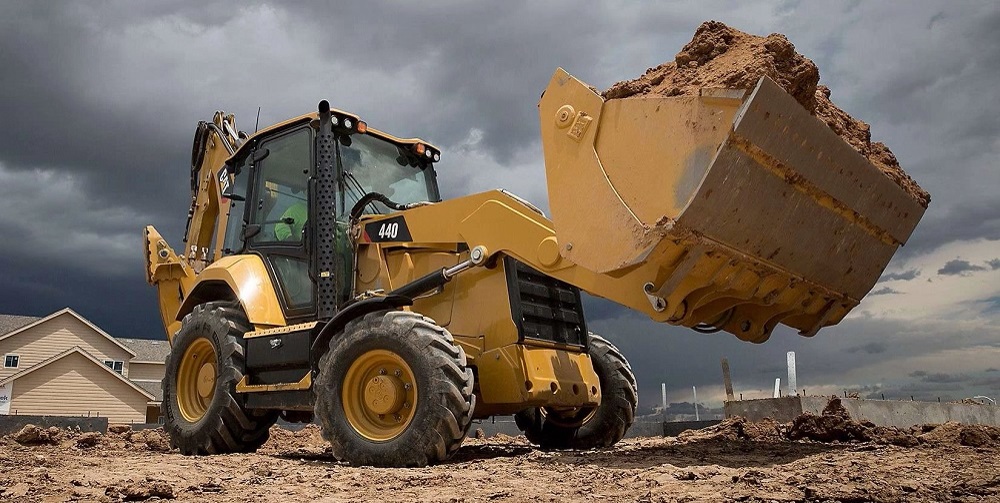Mini Excavator Rental: Compact and Powerful Equipment
Mini Excavator Rental: Compact and Powerful Equipment
Blog Article
Leasing Vs. Acquiring Building And Construction Tools: Making the Right Selection for Your Job
When starting a building task, among the crucial choices that predict stakeholders and managers face is whether to rent or get building and construction devices. Both options have their drawbacks and advantages, making the option an essential one in the job planning process. The choice depends upon various aspects such as expense factors to consider, job duration, devices maintenance, scalability, adaptability, and threat administration. Each component plays an essential duty in establishing the most appropriate path for the job's devices demands. heavy equipment rental. Let's check out these elements additionally to recognize exactly how they impact the decision-making process and inevitably the success of the project.
Cost Factors To Consider
When examining the financial element of buying versus renting construction equipment, the ahead of time expenses and long-lasting expenditures need to be thoroughly considered. Renting tools typically requires lower preliminary payments contrasted to purchasing, making it an eye-catching choice for short-term projects or service providers with budget plan restraints. Leasing gets rid of the demand for large resources expenses and reduces the monetary risk related to equipment ownership, such as upkeep and depreciation expenses. However, in the lengthy run, continually renting tools can collect higher prices than acquiring, especially for extensive jobs.
On the various other hand, purchasing building equipment entails higher upfront costs however can result in long-lasting savings, specifically for lasting projects or regular individuals. Eventually, the choice between renting out and purchasing building and construction tools hinges on the job's period, regularity of usage, budget considerations, and long-term economic objectives.
Task Duration

Alternatively, for lasting tasks or recurring building job, buying equipment could be the a lot more cost-effective alternative. Getting tools can result in cost savings in the long run, especially if the equipment will certainly be regularly utilized. Additionally, owning equipment supplies a feeling of control over its availability and permits for customization to fit details job requirements.

Tools Upkeep
Offered the vital duty task period plays in figuring out the most affordable strategy in between getting and leasing building and construction devices, the focus currently shifts in the direction of checking out the vital aspect of equipment maintenance. On the other hand, having tools needs an aggressive technique to maintenance to stop breakdowns, make certain security, and extend the devices's life expectancy. Eventually, a properly maintained building tools fleet, whether rented or had, is essential for the effective and reliable completion of construction projects.
Versatility and Scalability
In the realm of building and construction tools administration, the facet of adaptability and scalability holds considerable significance for project efficiency and source use. Opting to lease building and construction equipment offers a high degree of adaptability as it enables the fast adjustment of equipment kinds and quantities based on the advancing needs of a task. Renting out makes it possible for service providers to access a variety of specific devices that might be required for certain tasks without the long-term dedication of possession. This versatility is especially helpful for projects with differing needs or uncertain durations (boom lift rental).
Furthermore, scalability, one more critical aspect, is naturally linked to versatility. Renting out building and construction tools uses the benefit of conveniently scaling procedures up or down as job needs fluctuate. Professionals can quickly exchange or add devices to match the task's altering needs without the restrictions of having possessions that might end up being underutilized or out-of-date. This ability to scale sources successfully can result in cost financial savings and improved task timelines, making leasing a desirable option for jobs calling for flexibility and receptive source allotment.
Threat Management
Efficient threat management in building and construction devices operations is extremely important to ensuring task success and mitigating prospective monetary losses. Building tasks naturally read involve numerous threats, such as equipment failures, mishaps, and project delays, which can considerably influence the task timeline and budget. By thoroughly considering the threats connected with owning or leasing building devices, project supervisors can make enlightened decisions to decrease these potential risks.
Renting out building and construction tools can use a degree of risk mitigation by moving the obligation of upkeep and repair services to the rental company. This can minimize the economic burden on the task owner in situation of unforeseen tools failures (forklift rental). Furthermore, leasing provides the adaptability to gain access to specific more tips here tools for particular task stages, decreasing the threat of possessing underutilized machinery
On the other hand, possessing construction devices offers a sense of control over its use and upkeep. However, this additionally suggests bearing the full duty for repair work, maintenance prices, and devaluation, raising the monetary threats related to devices possession. Cautious threat evaluation and consideration of variables such as project duration, equipment application, and upkeep needs are critical in establishing the most ideal option for effective threat administration in building and construction jobs.
Verdict
In conclusion, when determining in between leasing and acquiring building tools, it is vital to think about cost, project period, tools maintenance, flexibility, risk, and scalability management. Each variable plays a vital function in determining one of the most appropriate choice for the project available. By carefully evaluating these aspects, project supervisors can make an informed decision that lines up with their budget, timeline, and general task goals.

Report this page